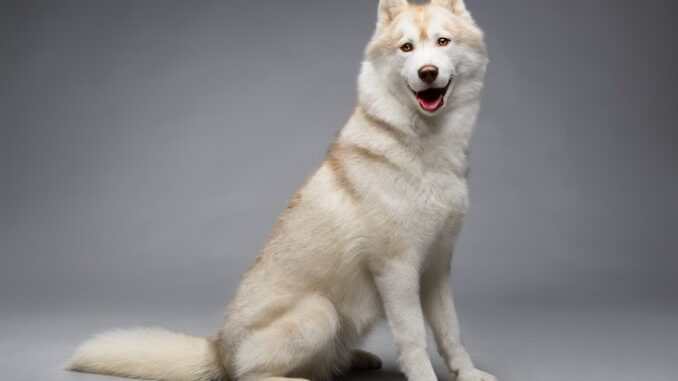
Have you ever seen a White Husky in the snow? It’s like watching a ghost glide through a majestic and almost ethereal winter wonderland. These stunning dogs, with their striking white coats and piercing blue eyes, are a feast for the eyes and a bundle of energy and affection. As someone who grew up with a German Shepherd and is now a proud parent to two Labradors, I’ve always been drawn to dogs that bring spirit and loyalty to a family. Today, I want to share everything about the White Husky, a breed that’s as beautiful on the inside as on the outside.
Whether you’re an active family looking for a new member to join your adventures or simply enchanted by their unique allure, understanding the White Husky is essential before welcoming one into your home. Let’s dive into what makes the White Husky not just a pet but a spectacular family companion.
TABLE OF CONTENTS
- White Husky Quick Breed Summary
- White Husky Dog Breed Overview
- Stunning Physique of the White Husky
- Vibrant Personality of the White Husky
- White Siberian Husky Grooming
- White Husky Care Guide
- Common Health Issues in White Siberian Huskies
- The Cost of Owning a White Husky
- FAQs about White Huskies
- So, Is the White Husky Right for You?
White Husky Quick Breed Summary
White Husky Dog Breed Overview
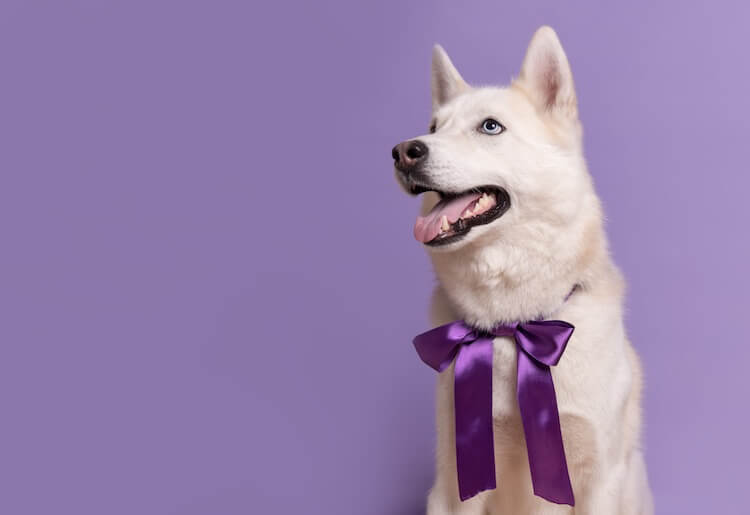
The White Siberian Husky’s tale begins in the harsh Northeast Asian climates, where the Chukchi people first bred these remarkable dogs primarily for sledding. Known for their incredible endurance and resilience, Huskies were not only essential in transporting goods and people across the icy terrains but were also cherished as guardians and companion animals by their owners. Their history dates back around 3,000 years, making them one of the oldest breeds known.
From Sledding to Stardom: The Journey to Domestication
As sledding dogs, Huskies were integral to the survival of the Chukchi. Their strength and stamina were put to the test during the international sledding competitions introduced to Alaska in 1909. Gaining mainstream popularity swiftly after their teams dominated a 408-mile race, these dogs demonstrated their exceptional capabilities beyond mere companionship. The pivotal moment for the breed came in 1925, when a Husky named Togo and his owner, Leonhard Seppala, heroically transported a lifesaving vaccination to Nome to combat a deadly outbreak, cementing Togo’s legacy as a progenitor of many modern White Huskies in America.
The Rare Beauty: Breeding the White Siberian Husky
The pristine white coat of the White Siberian Husky is the result of a recessive gene, requiring both parents to be carriers of this specific trait. Although it’s possible to breed white pups from traditional Huskies that carry this gene, securing a pure White Husky typically necessitates breeding two pure white parents. This selective breeding not only preserves the stunning visual appeal of the White Huskies but also maintains their genetic health and vitality.
Recognition and Popularity: The Husky’s Rise in America
When the American Kennel Club recognized the Siberian Husky in 1930, the first Husky to be registered was, notably, a white one. This marked the beginning of formal recognition for the breed’s pedigree in the United States. Further establishing their esteemed status, the Siberian Husky Club of America was formed in 1938, fostering a national network dedicated to promoting the breed’s interests through various competitions, including sledding, agility, obedience, and more.
Today, the White Siberian Husky stands as the 14th most popular dog in America, celebrated not just for its striking appearance but also for its intelligent, friendly, and dedicated nature. This breed continues to win the hearts of families and dog enthusiasts alike, proving that the White Husky is much more than just a pretty face.
Stunning Physique of the White Husky
Size and Build
The White Husky is a model of canine athleticism and grace. Males typically stand 20 to 24 inches tall, and females 18 to 22 inches tall. This breed possesses a robust and well-proportioned build, characterized by a muscular frame that exudes strength without bulkiness. Its size and agile physique make it exceptionally suited for activities that require stamina and endurance, such as sledding or agility training.
Coat Type
One of the most captivating features of the White Husky is its lush, dense coat. This double-layered fur is beautiful and highly functional, providing insulation from cold and heat. During the winter, their undercoat thickens to offer warmth; in warmer months, it sheds to help keep them cool. Regular grooming is essential to manage their shedding and keep their coat pristine.
Colors
While “White Husky” might suggest a purely snow-white coat, these dogs can also exhibit hints of cream and pale markings that add to their ethereal appearance. The uniformity of the white color across their coat and striking eyes often make them stand out in any crowd.
Other Distinctive Features
Perhaps the most striking feature of the White Husky is its piercing blue eyes, although some individuals may also have brown, green, or even heterochromatic eyes (one of each color). Their almond-shaped eyes add to their mystic beauty and express a wide range of emotions, from playful mischief to intense focus. Additionally, their erect triangular ears add to their alert and attentive demeanor, complementing their expressive faces.
The physical attributes of the White Husky not only make them a visually pleasing breed and underline their adaptability and resilience. Whether bounding through a snowy landscape or lounging at home, these dogs carry a powerful and graceful presence.
Vibrant Personality of the White Husky
Friendliness
The White Husky is renowned for its friendly and approachable demeanor, making it a fantastic addition to families with children or frequent visitors. These dogs thrive in social settings, displaying an open and inviting nature that endears them to humans and other animals. Their inclination to greet everyone as a friend rather than a threat makes early socialization fruitful, helping develop well-rounded and sociable behaviors.
Loyalty
Despite their friendly nature, White Huskies are profoundly loyal to their families. They form strong bonds with their owners and often exhibit a deep sense of companionship and dedication. This loyalty, however, does not typically manifest as overprotectiveness, making them poor candidates for guard dogs but excellent companions for those seeking a trusty sidekick for adventures and daily activities.
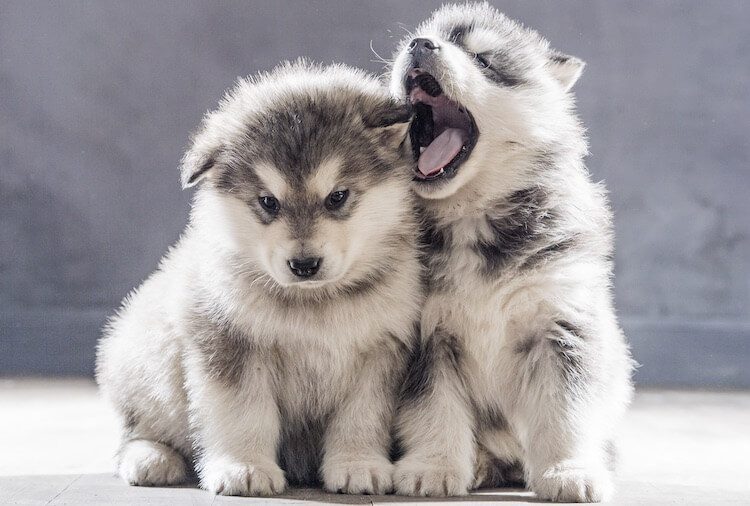
Playfulness
One of the most delightful traits of the White Husky is its playful spirit. These dogs retain a puppy-like energy well into adulthood, which, when coupled with their intelligence, can lead to mischievous antics if not properly channeled. They love engaging in games and activities that challenge their mind and body, making them an ideal match for active individuals or families.
Intelligence and Independence
White Huskies are sharp and quick learners, which can be a double-edged sword. Their intelligence means they quickly pick up on commands and training, but it also leads to a strong-willed nature that might test boundaries. Their independent streak requires consistent, firm, and patient training methods. They respond well to positive reinforcement and need mental stimulation to prevent boredom and the behavioral issues that can follow.
Energy Level
The energy level of a White Husky is high, necessitating regular, vigorous exercise to maintain their health and happiness. They are best suited for families that can provide plenty of outdoor activities. Without the proper outlet for their energy, they may resort to destructive behavior and become difficult to manage. Activities like long runs, hikes, and, if possible, sledding, are perfect for a Husky.
Adaptability
White Huskies are adaptable to climate, thanks to their double coat, which protects them in both warm and cold conditions. However, their adaptability to living environments can vary. They do best in homes with plenty of space to move around and explore, and they are not well-suited to apartment living unless their exercise needs are met very actively.
The White Husky’s personality and temperament make it stunning to look at and joyous and engaging to be around. Their combination of friendliness, loyalty, playfulness, intelligence, and energy makes them an excellent pet for families active and committed to integrating their Husky into many aspects of daily life.
Family Compatibility
White Siberian Huskies are renowned for their excellent rapport with children, making them an endearing addition to any family. Their playful and youthful disposition is a perfect breed for energetic kids, often leading to extended play sessions in the yard that can be both engaging and entertaining. However, it’s important to supervise interactions between young children and your Husky, as their size and exuberance can sometimes lead to overly boisterous behavior, particularly when they are excited.
In addition to their compatibility with children, White Huskies are generally very sociable with other dogs. Their inherent pack mentality makes them appreciate and thrive in the company of other canines, often making them ideal pets for households with more than one dog. However, their strong prey drive can pose challenges when they are around other smaller household pets. Without proper training and careful supervision, their natural instincts can take over, so it is crucial to manage their interactions with other non-canine pets carefully.
Overall, the White Siberian Husky’s friendly and social nature makes it a beloved family member. It is capable of forming deep and lasting bonds with both humans and other dogs. Their need for companionship means they fit best into homes with frequent interaction and engagement, ensuring they remain happy, healthy, and integrated into family life.
White Siberian Husky Grooming
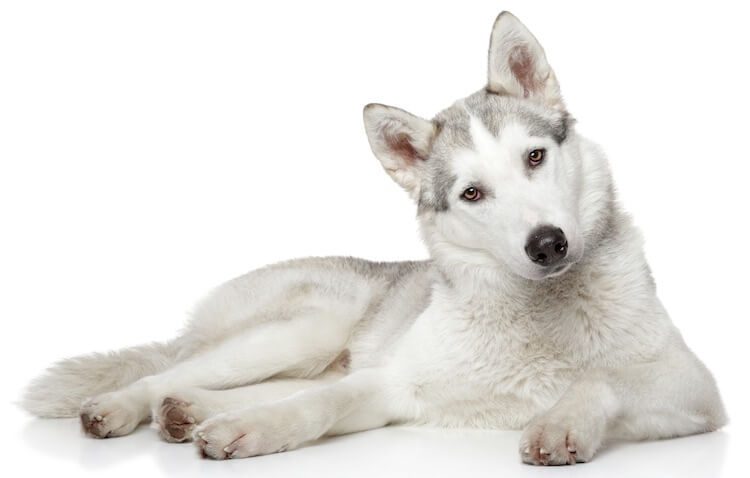
Proper grooming and care are crucial for maintaining the health and happiness of your White Siberian Husky. Here’s how you can keep your furry friend looking and feeling their best.
Coat Care
The White Husky’s thick, double-layered coat requires regular grooming to maintain its condition and manage shedding. Brushing your Husky at least twice weekly with a de-shedding tool or a slicker brush can help remove loose hair and prevent matting. During the shedding season in spring and fall, daily brushing may be necessary to keep up with the increased shedding.
Bathing
White Huskies do not require frequent baths, as bathing too often can strip their coat of natural oils that protect their skin. Aim to bathe your Husky once every three to four months unless they get filthy. Use a dog-specific shampoo that caters to double-coated breeds to help maintain the health and luster of their coat.
Nail Care
Regular nail trimming is essential to prevent discomfort and potential health issues. Huskies that aren’t as active outdoors may need their nails trimmed more frequently, typically once a month. If you can hear their nails clicking on the floor, it’s a sign that it’s time for a trim.
Ear and Teeth Maintenance
Check your Husky’s ears weekly for signs of dirt, redness, or bad odor, which can indicate infections. Clean their ears gently with a vet-approved ear cleaner. Oral health is equally important; brushing your dog’s teeth several times a week with dog-formulated toothpaste can help prevent dental diseases common in many breeds.
White Husky Care Guide
Daily Food Consumption
- Caloric Intake: Approximately 1,200 calories
- Kibble: Roughly 3 cups
Timing and Frequency of Feeding
What and when you feed your White Siberian Husky is crucial for their health. It is vital to avoid feeding your Husky right before exercise. To prevent digestive issues, such as gastric torsion, common in many large breeds, you should feed them at least two hours before any vigorous activity. This ensures they don’t exercise on a full stomach.
Siberian Huskies benefit from consuming two smaller meals daily rather than one large meal. This feeding schedule helps maintain their energy levels throughout the day and supports better digestion.
Diet Options
Owners have a couple of nutritious options regarding what to feed a White Husky. Many advocate for a bones and raw food diet (BARF), believing that it aligns well with the Husky’s natural hunting instincts and provides a diet rich in the proteins and fats critical for their energy levels.
However, a high-quality kibble for your White husky can also suffice if it meets the nutritional standards required for this breed. Ensure that any kibble you choose is high in protein and low in fillers that could lead to weight gain and other health issues.
Whether opting for raw food or kibble, the key is to ensure that the diet is balanced and tailored to the unique needs of your White Husky, considering factors like their activity level, age, and any specific health concerns. Always consult a veterinarian to tailor the best diet plan for your pets health and lifestyle.
Daily Exercise Needs
- Duration: At least 90 minutes
- Activity Level: High
Harnessing the Husky’s Energy
The White Siberian Husky is celebrated for its boundless energy, a trait deeply ingrained from its origins as a sled dog bred to cover vast distances each day. Providing at least 90 minutes of exercise daily is essential to keep up with their vigorous energy levels. Ideally, this should be divided into two 45-minute sessions, including walks, runs, or hikes.
Activities They Enjoy
While these dogs love being active outdoors, they have a particular fondness for certain activities over others. For instance, despite their love for cool environments, Siberian Huskies typically do not enjoy swimming. They might appreciate a stroll along the beach or a quick dip in a shallow pool, but they generally prefer not to engage in swimming activities. Instead, activities like trekking or jogging appeal to them and align better with their natural instincts and abilities.
Safety Precautions During Exercise
Given their strong prey drive, White Siberian Huskies can sometimes be challenging to control in open, unsecured environments. This can make it difficult to recall them during emergencies. To navigate this, employing a long training leash is advisable during outdoor activities. This approach allows them the freedom to explore while ensuring you maintain control, providing both safety and a satisfying amount of exercise for your energetic companion.
Providing your White Siberian Husky with sufficient physical and mental stimulation will keep them not only healthy but also deeply enriching your shared bond by channelling their energy positively.
Mental Stimulation
Remember mental exercise! White Huskies are intelligent and need mental stimulation to prevent boredom and destructive behavior. Use puzzle toys, training sessions, and regular socialization to keep their minds sharp and engaged.
By adhering to these grooming and care guidelines, you can help ensure that your White Siberian Husky is clean, well-maintained, healthy, happy, and an active member of your family for years to come.
Training a White Siberian Husky
White Siberian Huskies are known for their striking appearance and sharp intelligence and strong work ethic, stemming from their working dog heritage. This intelligence makes them eager to learn and please their owners. However, their working background shows them a notable stubborn streak, which can present challenges during training.
It’s crucial to remain calm and patient when training a White Siberian Husky. These dogs are highly perceptive and have long memories, so it’s important to avoid showing frustration or anger. Yelling or showing aggression can damage the trust between you and your Husky, potentially leading to long-term behavioral issues.
Instead, focus on positive reinforcement techniques. Reward the behaviors you want to encourage with treats, praise, or playtime, and calmly ignore or redirect undesirable behaviors. This method helps build a bond of mutual respect and understanding.
White Siberian Huskies are quick learners, and with consistent, positive reinforcement, they will soon begin to adapt their behavior to align with your expectations. Training in this manner not only fosters their obedience but also reinforces their loyalty and affection towards you.
Raising White Husky Puppies

White Huskies are recognized for their intelligence, which can be as varied as it is in humans, with each puppy maturing at its own pace. While these pups reach their adult size around the 12-month mark, their personalities continue to develop and mature over a broader range, typically between 1 and 7 years of age. This extended period of personality development means that raising a White Husky can be a journey full of surprises as they slowly reveal their unique character.
In their first year, Husky puppies experience significant physical growth, with their weight expected to range from 35 to 57 pounds. This variance largely depends on factors such as the specific Husky mix, their gender, the traits inherited from their parents, and the environment in which they are raised. Proper nutrition, regular veterinary care, and a stimulating environment are crucial during this formative phase to ensure they grow into healthy, well-adjusted adults.
This insight into the development of White Husky puppies underscores the commitment required to nurture these dogs through their formative years, ensuring they become a loving and integral part of any family.
Common Health Issues in White Siberian Huskies
White Siberian Huskies are generally robust and healthy dogs, but like all breeds, they are susceptible to certain health conditions. Knowing these potential issues can help you provide the best care for your Husky.
Genetic Conditions
Hip Dysplasia: This is a common condition in many larger breeds, including Huskies. It occurs when the hip joint fails to develop properly, which can lead to arthritis or crippling lameness. Regular vet check-ups and maintaining a healthy weight can help manage this condition.
Juvenile Cataracts: White Huskies can inherit this eye condition, which may develop early in life and lead to blindness if untreated. Regular eye examinations by a veterinarian can help catch this condition early.
Breed-Specific Concerns
Zinc Deficiency: This breed is particularly prone to problems associated with low zinc levels, which can cause hair loss and skin issues. A diet formulated for Huskies or supplementation as advised by a vet can prevent or treat this issue.
Hypothyroidism: Huskies can suffer from hypothyroidism, where the thyroid gland does not produce enough hormones, leading to issues like lethargy, weight gain, and coat problems. This condition is typically manageable with medication.
Preventative Measures
To keep your White Siberian Husky healthy, regular vet check-ups are crucial. These visits can help catch and manage these common issues before they become severe. Additionally, providing a balanced diet, regular exercise, and mental stimulation will help maintain their overall health and happiness. Being proactive about your Husky’s health can lead to a longer, more fulfilling life together.
The Cost of Owning a White Husky
Owning a White Siberian Husky is a rewarding experience, but it also comes with a significant financial responsibility. Here’s a breakdown of the costs involved in owning one of these beautiful dogs.
Initial Costs
- Purchase Price: Depending on the breeder’s reputation and the puppy’s lineage, a White Husky puppy can cost between $500 and $1,000.
- Supplies: Initial supplies including a crate, bedding, bowls, collar, leash, and toys can total around $200-$300.
- Veterinary Care: Initial vaccinations, microchipping, and spaying or neutering can add up to $200-$500.
- Training: Basic obedience classes are highly recommended, especially given the Husky’s independent nature, which can cost $100-$200.
Ongoing Costs
- Food: High-quality dog food suited to Huskies‘ dietary needs can range from $40 to $70 per month.
- Grooming: Professional grooming costs can be around $50-$100 per session, especially during shedding season. However, regular at-home grooming can help reduce this expense.
- Veterinary Check-Ups: Annual check-ups with vaccinations and routine tests typically cost about $200-$300.
Flea, Tick, and Heartworm Prevention: These preventative medications are essential and can cost $200-$300 per year.
Emergency Costs
- Unexpected Illness or Accidents: Veterinary emergency visits can start at $500 and can quickly escalate depending on the severity of the condition or injury.
- Chronic Health Issues: Conditions like hip dysplasia or hypothyroidism can lead to ongoing medical costs, including medications and special treatments.
- Health Insurance: To mitigate some of these expenses, pet health insurance might be a wise choice, with premiums typically ranging from $30 to $50 per month.
The joy of having a White Husky as part of your family is immense, but it’s important to consider and prepare for these financial aspects to ensure you can provide your furry friend a stable, happy, and healthy life.
FAQs about White Huskies
Can White Huskies Live in Warm Climates?
White Huskies can live in warmer climates, but extra care is needed to keep them comfortable. Due to their thick double coats, they are more susceptible to overheating. Provide plenty of shade and water, and limit exercise to cooler parts of the day. Air conditioning indoors can help manage the temperature effectively. Additionally, consider using cooling mats or vests specifically designed for dogs to help them stay cool.
How Well Do White Huskies Get Along With Cats?
White Huskies can get along with cats, especially if they are raised together from a young age. However, due to their high prey drive, careful introductions and constant supervision are crucial. Training your Husky to behave calmly around cats and rewarding positive interactions can enhance their relationship. It’s important to provide cats with escape routes and safe spaces. Over time, a Husky and a cat can coexist peacefully with proper management and patience.
Are White Huskies Good For First-Time Dog Owners?
White Huskies can be challenging for first-time dog owners due to their high energy levels and independent nature. They require consistent training and a significant amount of daily exercise to prevent destructive behavior. First-time owners should be prepared to invest time in training and socializing their Husky. Seeking assistance from experienced trainers or obedience classes is highly recommended. Understanding and meeting the needs of a Husky can be rewarding, but it demands commitment and patience.
Do White Huskies Require Special Diet Considerations?
White Huskies do not necessarily require a special diet, but their diet should be high-quality and well-balanced to support their active lifestyle. It’s important to monitor their protein and fat intake to ensure they’re getting sufficient energy for their daily activities. Avoid foods with high grain content as Huskies can be sensitive to them. Supplements like zinc and omega fatty acids can support their skin and coat health. Always consult with a veterinarian to tailor a diet plan that suits your Husky’s individual health needs.
How Do White Huskies Handle Being Alone?
White Huskies are highly social animals and do not handle being alone very well. They thrive on companionship and can develop separation anxiety if left alone for prolonged periods. This can lead to destructive behaviors as a form of coping with their anxiety. To help your Husky handle alone time better, training them from a young age to be comfortable by themselves is crucial. Providing interactive toys and ensuring they get plenty of exercise and attention when you are home can also mitigate stress and anxiety.
So, Is the White Husky Right for You?
White Huskies Are For:
- Active Individuals and Families: If you lead an active lifestyle and enjoy spending time outdoors, a White Husky might be the perfect companion for you. Their high energy and stamina make them ideal partners for long hikes, runs, and outdoor adventures.
- Experienced Dog Owners: Those who have previous experience with high-energy dogs and are familiar with the nuances of dog training will find White Huskies a rewarding challenge.
- Homes with Ample Space: White Huskies thrive in environments where they have plenty of room to move around and explore, making them well-suited for houses with large yards.
- Committed Owners: If you are ready to commit to the rigorous grooming, exercise, and training needs of a White Husky, then this breed could be a great addition to your family.
White Huskies Are NOT For:
- First-Time Dog Owners: Due to their stubborn and independent nature, White Huskies can be challenging for first-time dog owners who are not familiar with dog training techniques.
- Apartment Dwellers: Their size and energy levels make White Huskies less suitable for apartment living unless their exercise needs can be met vigorously every day.
- Families with Very Small Pets: Given their strong prey drive, homes with small animals might find it challenging to manage a White Husky.
- Those Looking for a Low-Maintenance Pet: White Huskies require considerable time and energy, both in terms of physical exercise and grooming needs.
In conclusion, while the White Husky is undoubtedly a beautiful and loyal breed, they are best suited for individuals and families who can meet their high demands for activity and companionship. If you’re ready for the challenge and commitment, a White Husky can make a wonderful and enriching addition to your life

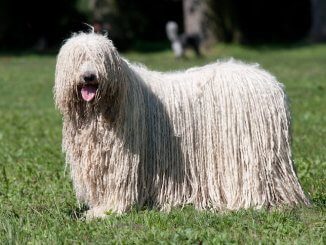

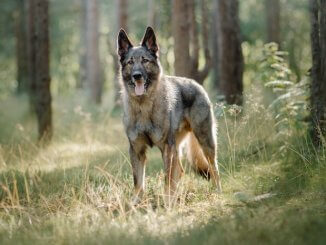
I have a female Siberian Husky and she is absolutely gorgeous and very playful.
She very rarely lets out a bark but is quite happy to “wuff” in my face now and again.
Also has the blue and brown eyes which, to me, only enhances her beauty.
I have a White Husky Who enjoys scooter joring.